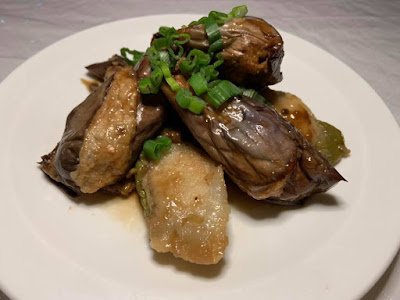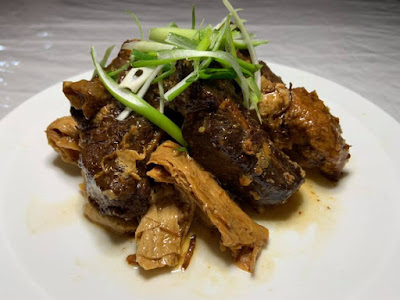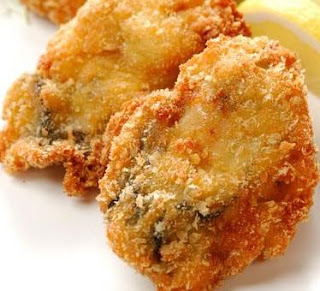Pre-cooked Chinese food sold at Chinese grocers in the US is not a new phenomenon. Just like the global movement which an increasing number of female workers had started to join the workforce full-time since the 70's, a lot of Chinese women also ventured outside the boundary of the home turf and took up full-time careers. The responsibilities and expectations on women to take care of the family, also like most working women in the world, never disappeared. Pre-cooked Chinese dishes, which are already seasoned with familiar traditional Chinese flavors and are available in many varieties at the steam table of these grocers, are the most efficient and delicious way to feed the family after a long day of work. It is a life-saver! Most importantly, the home-cooked flavors cure the homesickness for some like the recent immigrants, and for others maintain a little bit of the Chinese tradition through food in families that face the competition of other fast dinner choices of McDonald, pizza delivery or microwave dinners.
These pre-cooked meals are usually cooked really well as the grocery stores sell the fresh produce, poultry, meat and all ingredients themselves, and rely heavily on repeat customers who live in the vicinity. For people like me who don't live near these grocers and only get to enjoy these dishes occasionally, the game plan is to eat in abundance and pair them with wines.
A recent trip to the
Pacific Northwest introduced me to a few high-quality and vibrant Pinot Noir
that are produced outside the Willamette Valley in Oregon. The 2012
Dampier Pinot Noir, produced by Cathedral Ridge in Hood River, is a
light-bodied Pinot that has the aromas of strawberry, herbs and sour cherry and
brims with pomegranates and earthy notes. The tofu chunks, a simple appetizer
dish that I fancy a lot, are deep-fried, airy and crispy outside, soft and
moist inside, and are bursting in salty and soya bean flavors. The Dampier
Pinot can complement the airy texture and earthy tasting of these tofu chunks
with slightly sour and mineral notes. Rarely vegetables are not served in
Chinese meals. Fresh Chinese greens such as bok choy are treated with a quick
stir-fry with salt, garlic, white pepper and a dash of sesame oil. The
Dampier Pinot is light and cheerful that won't overpower any cooked greens.
Over and over again, I found red Zinfandel pairs really well with mildly spicy Chinese dishes. The 2016 Gnarly Head Lodi Old Vine Zin that I picked up from Total Wine, a wine mega store in the East Coast, is no exception. Its ripeness, jamminess and toasty aromas pairs well with the eggplant and green pepper that is stuffed with minced and well-seasoned fish paste. The stuffed eggplant and green pepper is not an easy dish to make if you try to do everything from scratch. The fish paste is typically made from ground up tilapia and pollock, egg white, white pepper and cornstarch to an elastic and pasty consistency. When it is applied to the eggplant "pockets" and the green pepper wedges, it needs to stay inside. Once the eggplant and green pepper are pan-fried and the fish paste is fully cooked inside, they are glazed with black bean garlic sauce (aka the go-to sauce of Cantonese cooking). This Old Vine Zin is bold, spicy and versatile enough to simultaneously bring out the white-peppery flavor of the fish paste, the creaminess of the cooked eggplant and the spicy green pepper.
Either you love it or
hate it... bitter melon to a lot of people is an intimating vegetable to use,
let alone to eat. For the gastronomic warriors who embrace the full
spectrum of the five tastes (i.e., sweet, sour, bitter, salty and umami), stir-frying sliced bitter melon with thin strips of beef (recipe courtesy of The Woks of Life) or scrambling eggs with the cooked bitter melon slices are typical Chinese ways to
enjoy this bitter veggie. The bitterness can be reduced by quickly blanching
bitter melons in boiling water. Just like any stir-fried vegetable
dishes, not overcooking the bitter melon is key to retain the dark green color
and crunchy texture. A quick toss of black bean garlic sauce, just enough
to coat the bitter melon, is all it takes to finish this dish in the wok. The Old
Vine Zin is peppery and has a lingering finish of spiciness, which does a
perfect job to complement this complex dish.
I got this bottle of
2016 Starlight Ridge Cabernet Sauvignon from the Cab bundle at the Heartwood
& Oak online store. Buying wine bundles from an online
store is like dating online...it's exciting...you look at the profile, the photo... but never know what you really get until you "meet" the bottles. This
Cab, which is from southern Australia's famed Southeastern region, is a big hit with the pork rib dishes that are prepared in two different styles. The tofu strips (in golden color) and pork ribs are braised in dark soya sauce and mijiu (cooking rice wine), cooking to perfection until the ribs
fall off the bone. Dark soya sauce, a staple for Chinese stew, is
darkened and thickened with molasses or caramel, added cornstarch, and is aged
for a longer period of time than the regular soya sauce. When "aging" comes
into the picture, aging this soya sauce in bourbon barrels or glass containers
differentiate the prices and flavors. It is primarily used for cooking instead
of a dipping sauce used in dumplings or sushi.
Tofu strips are sold as dry food on the shelf in the store, and are rehydrated in water until it is softened prior to cooking. Unlike fresh tofu, the strips, used mostly in stew, have intense soya bean flavor, are harder in texture and fun to eat as the layering does absorb all the goodness of the fatty sauce of the meat. This Aussie Cab is juicy and unmistakably entices with ripe and rich notes of cassis, black currant and blackberry aromas, working amazingly well with the heavier mouth-feel of this savory braised pork ribs.
Contrary to the popular belief that Chinese don't care too much about dessert at the end of the meal, Chinese desserts in fact play a big role in wrapping up a meal. While large cakes, pies or ice cream don't always come into the picture, many other forms of Chinese desserts do add a sweet note to end the meals. For example, the hot sweet red bean soup is often served at the end of a wedding banquet. An assortment of dim sum sized sweets such as winter melon pastries, egg tarts or almond cookies, to name a few, can be served in a platter to please the crowd who has a sweet tooth. What I personally like a lot is the Chinese steam bun which has mildly sweet red bean paste inside and is wrapped by the most fluffy and airy rice-floured outer bun. Since this bun is light, it leaves room for a glass of dessert wine of your choice and a relax palate to enjoy it fully. Being a New Jersey girl, I support local businesses especially local wineries like Tomasello Winery which started growing grapes and making wines 80 years ago in the Atlantic and Camden counties. The 2016 Tomasello Vintage Port is perfect for someone like me who is not a big fan of distilled or aged tawny port wine, and simply craves for an occasional glass of dessert wine to pair with my dessert. This New Jersey port is made from a field blend of 2016 Petit Verdot and Chambourcin, a grape varietal that grows really well in New Jersey. It was aged entirely in oak and was never distilled, finishing in Late Bottled Vintage style with a nice balance of fruit and residual sugar. The fresher mouth-feel of this port does exactly what I expected...allowing you to taste the bun, the bean paste and the cinnamon note that presents in this port!
In
case you are curious what the Chinese characters stamped on the bun mean...they
are saying "Bean Paste" and "Peace"...a blessing that the
bun maker wants to channel through his simple delights to the customers.
As we are closing up 2018, let's continue to explore the limitless pairing options
between Chinese cuisines and wines and to remember, "life is too short not to drink wine with Chinese
food!"
Where to find the food and wines?
Food: 122 Meat Market, 81 Elizabeth Street, New York, New York, USA
Port: http://www.tomasellowinery.com/ =>search via "Shop our Wines"

















































